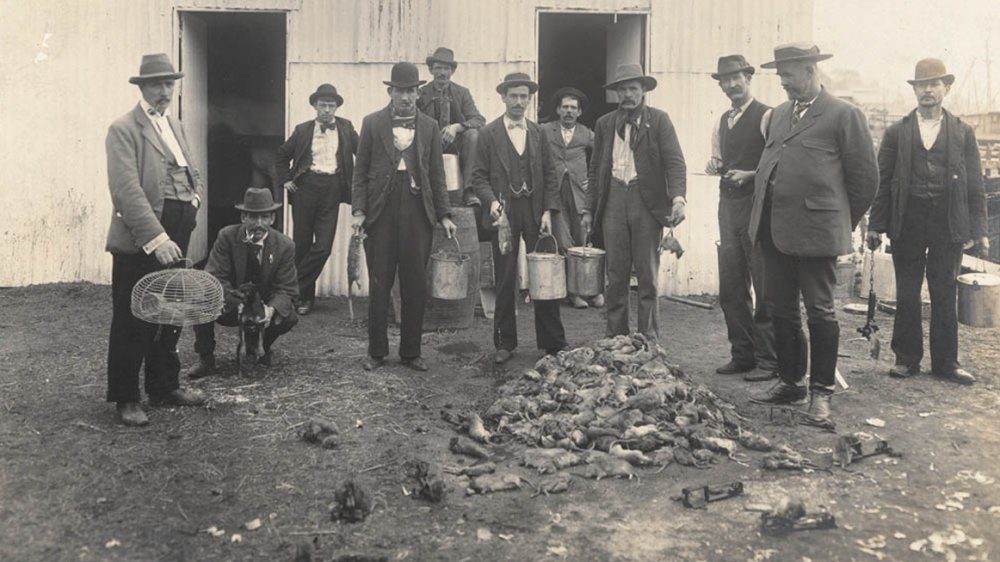
What It Was Really Like Being A Rat Catcher
Victorian England. History’s go-to locale for street urchins, the flamboyant opulence of the nouveau riche, Dickensian orphans, and all the soot-and-grime lacquered filth you can imagine.
Besides such a lovely pedigree, Victorian England was also home to some of the most disgusting lines of work possible. According to the Londonist, there were toshers, who scavenged filth-encrusted sewers using fishing nets looking for nails, coins, or anything of value to sell. There were mudlarks, who did the same thing along the Thames. There were workhouses, where 12+ hours of incessant manual labor such as hefting sledgehammers was basically worse than prison. And, because of course there was: there were bone grubbers, who prowled streets looking for actual bones to sell to use to make … are you ready? Soap.
All of these actual professions were basically reserved for paupers and the functionally destitute. And all of them, as well, derived from an actual social need (which basically confirms the era’s socioeconomic inequalities). But one profession, above all others, rose to notoriety, and possibly even wealth: rat-catcher. The most famous rat-catcher of all time was Jack Black (not that one), whose antics, absurd costume, and actual uncanny skill brought him fame and the personal employment of Queen Victoria, herself. Per Mentalfloss, rat-catchers even inspired the well-known story of the Pied Piper.
But what of the common rat-catcher? What was a day in the life of the Victorian era’s most valued vermin hunters?
Rat a tat tat, who is that?
It might be obvious to imagine what a rat-catcher did on a daily basis (it’s there in the name), but as always, details reveal truth.
Rats were an unspeakable plague during Victorian times, particularly in urban centers like London. They were everywhere: clogging pipes, pantries, gardens, sewers, and every dark hole in between. As cited by Geri Walton, one rat-catcher said, “One pair of rats … with their progeny, will produce in three years no less a number than 646,808 rats, which will consume day by day as much food as 64,680 men, leaving eight rats to starve.” Some rats were so big that they were pitted against dogs in fights. Rats were devastating to food stores as well as being virulent vectors of disease.
Apparently, and unbelievably, rat-catchers actually caught rats by hand. They would bait rats with sweet-smelling oil on their hands and rummage around in suspected rat-infested places. Of course, this left rat-catchers with filth-infected bites and scratches. To help, rat-catchers crafted poisons, and even sold their toxic homebrews at markets as a separate business, often bringing along rats for rat-killing demonstrations. Sometimes, rat-catchers deployed trained vermin-catching animals like ferrets, or in the case of Jack Black (as he claimed), a monkey.
Rat-catching was such a common profession that they even had a rat-catcher’s guild. If a decent rat-catcher dispatched 13 rats a day (about 5000/year), they were doing pretty well, money-wise; even children commonly took up the job.

The Truth About Paul Revere's Spy Ring

How The Taj Mahal Was Nearly Destroyed

The Unsolved Murder Of Richard Milan

Can You Live Longer Without Sleeping Or Without Eating?

The Stunning Truth About Colombia's River Of Five Colors

What It's Really Like To Go To The Olympics As A Spectator

Pink Floyd Legend Rejects Offer From 'Idiot' Mark Zuckerberg

How The Battle Of Yorktown Led To The End Of The Revolutionary War

Why You Won't See The Royals Eating Shellfish

The Sketchy Truth About Dr DisRespect
























